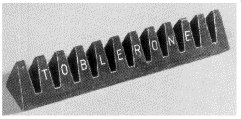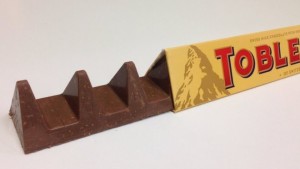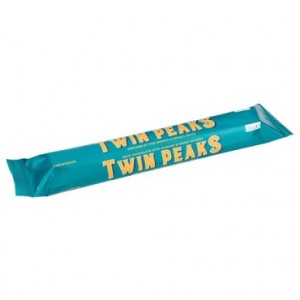A Software Vendor and its Customer: “like ships passing on a foggy nightâ€
By Richard Stobbe
When a customer got into a dispute with the software vendor about the license fees, the resulting case reads like a cautionary tale about software licensing. In ProPurchaser.com Inc. v. Wifidelity Inc., 2017 ONSC 7307 (CanLII), the court reviewed a dispute about a Software License Agreement. The customer, ProPurchaser, signed a license agreement with Wifidelity for the license of certain custom software at a rate of $6,000 per month. Over time, this fee increased and at the time the dispute commenced in 2017, ProPurchaser was paying a monthly fee of about $42,000.  The customer paid this fee, but apparently had no way of telling what it was paying for.
Detailed invoices were never submitted and so it was impossible to tell objectively how this fee should be broken down between license fees, support fees, expenses, or commissions.  The customer had formed the impression that this increase was due to support fees at an hourly rate, since the original license of $6,000 per month remained in effect and had never been amended in writing.
The software vendor, on the other hand, gave evidence that the license fee had increased under a verbal agreement between the parties.  “Based on the conflicting evidence,†the court mused, “it seems that the parties, much like ships passing on a foggy night, proceeded for several years unaware of the other’s different understanding about what was being charged by Wifidelity and paid for by ProPurchaser.â€
Under the Software License, either party was entitled to terminate without cause, by providing 14 days’ written notice to the other party. Eventually, the software vendor, Wifidelity, exercised the right of termination, triggering the lawsuit. ProPurchaser immediately sought a court order preserving the status quo, to prevent the software vendor from shutting down the software. In August, the court granted that order for a period of six months, subject to continuing payment of the $42,000 monthly license fee by ProPurchaser.  In November, ProPurchaser again approached the court, this time for an order extending the order until trial. Such an order could, in effect, be tantamount to a final resolution of the dispute, forcing the license to remain in effect. However, this would fly in the face of the clear terms of the agreement, which permitted for termination on 14 days’ notice.
While the dispute has yet to go to trial, there are some interesting lessons for software vendors and licensees:
- From a legal perspective, in order to succeed in its injunction application, ProPurchaser had to convince the court that termination of the license caused “irreparable harmâ€. However, the agreement itself allowed each party to terminate for no reason on very short notice, making it difficult to argue that this outcome – one that both sides had agreed to – would cause harm. If it caused so much harm, why did ProPurchaser agree to it in the first place? And in any event, any harm was compensable in damages and therefore not “irreparableâ€.
- That was a problem for the customer, when making a fairly narrow legal argument, but it’s also a problem from a business perspective. If the licensed software supports mission-critical functions within the licensee’s business, then make sure it’s not terminable for convenience by the software vendor.
- If changes are made to the software license agreement, particularly regarding the essential business terms like license fees and support fees, make sure these amendments are captured in writing, through a revised pricing schedule, or detailed invoicing that has been accepted by both sides.
Calgary – 13:00Â MST
No comments
Trademark Evolution: Part 1 (When Trademarks Change)
By Richard Stobbe
The famous Toblerone bar is so distinctive in shape and design that it serves as a great example of a “distinguishing guise†trademark. It has been used as a  trademark since 1910 in Canada, and during that time has maintained the same “tread design†of chocolate peaks, which has been a registered trademark in Canada since 1969.

It’s the actual shape of the bar that functions as a trademark. The bar is really a whole trademark treasure-trove since the unique shape of the triangular box, the colour scheme of the lettering, and the word TOBLERONE, are all separate trademarks, registered in a number of countries around the world.
The Swiss chocolatier redesigned the famous bar for the UK marketplace (reportedly in response to price adjustments required in the wake of Brexit). The newly redesigned bar expanded the valleys, resulting in fewer peaks, all to shave costs.  This of course resulted in a minor scandal in the UK, as well as some heartburn for the company’s trademark counsel.

If the mark-as-used departs from the mark-as-registered, there is a risk that the original registered mark has been abandoned, putting the strength of the registered rights at risk. This is a basic tenet of trademark law. While minor changes are permitted as a brand evolves, there is a point at which the changes go too far, essentially resulting in the adoption of a new mark.
Seeing this vulnerability, a competitor entered the marketplace with a bar “inspired by†the original Toblerone bar. Poundland, a UK discount retailer, introduced a double-peaked chocolate bar complete with knock-off packaging that mimics the distinctive gold background and red lettering of the original Toberlone package.

After a legal wrangle that reportedly kept the Poundland product off store shelves for several months, the dispute was settled and Poundland introduced modified packaging, featuring gold lettering against a blue background.

The lessons for business?
- In the field of consumer products, this is a good reminder that the shape of the product or its packaging can serve as a trademark, and can be registered as a means of  protecting brand rights.
- When a product or trademark evolves over time – whether in response to cost pressures, as in the Toblerone case, or in response to changes in the marketplace, or consumer demands – it’s important to measure the modified mark against the original mark, as it was registered. If the departure is too great, the rights to the original mark may be placed at risk.
Calgary – 09:00 MST
No commentsPrivacy Breach … While Jogging Down a Public Path?
.
By Richard Stobbe
An online video shows someone jogging on a public pathway during a 2-second clip. Let me get this straight… does this constitute a breach of privacy rights? According to an Ontario court, the answer is yes.
This is a scenario that is likely repeated every year across the country in a variety of industries. In this case, a real estate developer engaged a video developer to produce a sales video for a residential condominium project. To capture the “lifestyleâ€Â of the neighbourhood, the video developer shot footage of local shops, bicycling paths, jogging trails, and other local amenities. In the course of this project, the plaintiff – a jogger – was caught on video, and after editing, a 2-second clip of the plaintiff was included in the final 2-minute promotional video.
Like all video, this one was posted to YouTube, where it lived for 1 week, before being taken down in response to the plaintiff’s complaints.
In Vanderveen v Waterbridge Media Inc., 2017 CanLII 77435 (ON SCSM), the court considered the claim that this clip of the jogger constituted a violation of privacy rights and appropriation of personality rights.  In the analysis, the court considered the tort of “intrusion upon seclusionâ€, which was designed to provide a remedy for conduct that intrudes upon private affairs where the invasion of privacy is considered “highly offensiveâ€.
The court in this case decided that a 2-second video clip of someone jogging on a public pathway does constitute a “highly offensive†invasion of a person’s private affairs. The plaintiff was awarded $4,000 for the breach of privacy rights and $100 for the appropriation of personality.
Some points to consider:
- It is unclear why the court did not spend more time considering the issue of “reasonable expectation of privacyâ€. A number of court decisions have looked at this issue as it relates to video or photography on public beaches, public schools and other public places. This is not a new issue in privacy law, but it appears to have been given short shrift in this decision.
- The impact of this decision must be put into context: it is an Ontario small claims court decision, so it won’t be binding on other courts. However, it may be referred to in other cases of this type. The decision is unlikely to be appealed considering the amounts at issue, so we probably won’t see a review of the analysis at a higher level of court.
- Consider the implications of this approach to privacy and personality rights in light of the use of drone footage in making promotional videos – something that is becoming more common as costs lower and access to this technology increases.
- When entering into contracts for any promotional or marketing collateral – website content, images, video footage, film, advertisements, print materials – both sides should review the terms to confirm who bears the risk of addressing complaints such as this one, and who bears the responsibility for obtaining consents or releases from recognizable individuals who appear in the media content.
For advice regarding privacy rights, personality rights, drone law, and video development contracts, contact Field Law.
Calgary – 10:00 MST
No comments